You know as well as I do, when it comes to traveling or moving around with your didgeridoo, you quickly realize it wasn’t designed for that! It’s not so much its weight as its length that can be troublesome. Have you ever hit your instrument against the top of a doorway after misjudging how short your didgeridoo was?! Or when you have to prop your didgeridoo against the back seat of your car to close the trunk…
In short, the question of a travel didgeridoo comes up very quickly. After all, since it’s just a tube, there should be solutions adapted for traveling, right?
This question is regularly asked of me. And I must admit that I’m often troubled when giving an answer. Indeed, the selection criteria are important and the range of travel didgeridoos is not that extensive. Two constraints that must coexist. So let’s first try to clarify what you’ll be doing with your travel didgeridoo.
Small aside before that, I take this opportunity to remind you that you can practice your didgeridoo without your didgeridoo (see the video: An exercise to improve without your didgeridoo). An exercise that I can only recommend, as it will help you progress so much.
The three criteria to consider
1. Will it be your main didgeridoo?
This question is important because it will determine how much time you’ll spend playing on your instrument. And that changes the equation quite a bit. Indeed, and you’ll quickly realize this, a travel didgeridoo will struggle to substitute for your main instrument. Reducing bulk has the effect of constraining the playability and character of the instrument. No night without day, no life without death, everything is relative in this world.
Therefore, unless you’re a beginner, I advise you to already have a main didgeridoo before investing in a travel didgeridoo. Certainly, it will be more cumbersome, but you’ll definitely take pleasure in blowing into it.
However, for people who already have an instrument or for beginners (less demanding to start), then the rest of this article might help you.
2. What budget do you have?
Budget quickly sorts through the choice of an instrument! And even if it may seem frustrating to you, it has the big advantage of helping you find your way. Depending on your desires and your situation, it’s obvious that you won’t necessarily be ready to spend a large sum to have the joy of carrying your didgeridoo everywhere with you.
It’s for this reason that I’ve taken care to include different budgets in the list that follows. However, you’ll see that there’s no miracle… The didgeridoo remains a niche instrument and therefore primarily of artisanal manufacture. Manual work is paid for and that’s normal. But on the other hand, prices can quickly rise. Consider yourself warned, sailor!
3. How do you travel?
If you’re reading these lines, it’s because you probably have a job or a life that constrains (or encourages!) you to regularly travel. This is often the reason why people want to invest in a travel didgeridoo.
However, travel can vary: car, train, plane, subway… So many criteria that each influence the choice of a transportable didgeridoo in their own way.
For example, on a train or subway, weight could be an important criterion. Whereas in a car, the latter might be less essential. As for the plane where the size allowed in the cabin is about 115 centimeters (length + depth + width), it strongly encourages considering the question of length.
A little experience sharing in passing, the first time I had to take a plane with my didgeridoo, it was to give a concert and a workshop in Budapest, I was very worried and I had wrapped my didgeridoo with bubble wrap like never before. The package was huge! In the end, apart from intense stress, everything went well. I then realized that short flights (in Europe) don’t seem to endanger didgeridoos in the hold. Now, I simply wrap a layer of bubble wrap around my didgeridoo before putting it in its case, then in the hold. For now, it works. But I grant you that this solution isn’t really one…
With introductions made, let’s now see what we can find in terms of transportable didgeridoo! Most of the time, people who contact me talk about the snail didgeridoo or Didge-box. Two choices that I don’t necessarily recommend… And here’s why.
Didgeridoos for traveling
Didge-box, inexpensive but to be avoided
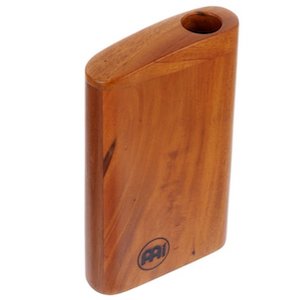 • Price: about €50
• Price: about €50
• Photo source
At first glance, a didge-box has everything going for it: extremely compact, it fits easily into a bag, its price is attractive and many videos praise it.
All this gives it an appealing aura.
Unfortunately, to one who knows the field, the charm quickly fades. It’s a fact: most didge-boxes don’t sound good. Made of plywood, the interior is not circular, but often rectangular, which is not a good argument for our good old piece of wood. Moreover, the shape of the air column inside is often tortured, which undermines its acoustics. Certainly, the system is ingenious, but you’ll have understood, I don’t recommend it: poor harmonics, no resonance, no rebounds, not much…
Snake Didge (or snail didge), yes but not just any kind
Industrial Snake Didge, move along, there’s nothing to hear
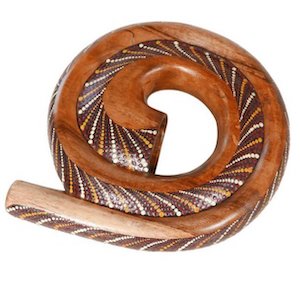
• Price: from about €75
• Photo source
It’s all said in the title. These didgeridoos are really of poor quality and even if their prices seem tempting, run away. They are the cousins of Indonesian didgeridoos drilled by the screw (Also read: Beware of cheap didgeridoos!).
But, unlike the latter which sometimes sound good, I’ve never had a snail didgeridoo in my hands that resonates. Unfortunately, these instruments aren’t just bad, they often block the player’s learning and progression. And believe me, it’s rare that my words are so radical.
I imagine as I write this article, people who have a snail didg. Don’t be afraid! It hurts at first, but I promise it will do you a service: change your didgeridoo. It won’t take you long to hear the difference (read which didgeridoo to choose to learn to play?). Of course, I haven’t tried everything and it’s possible that some models sound better than others… But I admit that I hardly believe it!
Be careful however, I’m talking here about snail didgeridoos that you’ll find in large music store chains. For info, sometimes some artisans make them in terracotta. In this case, the snail didge will often sound rather good, but it will have the disadvantage of being fragile and especially extremely rare to find.
Nevertheless, let’s keep hope, because all is not lost! There are also artisanal Snake didges and there, it changes everything.
Artisanal Snake Didge, a good choice, but more expensive
• Yoram (photo at the top of the article) | From about €400 (Yoram’s website)
• Ujazi | From €600 on order (Ujazi’s website)
Some manufacturers wanted to create didge-boxes (by the way, we could also call them Snake-didge, the two are quite close in the end).
The result is rather promising for those who like the idea of playing in a compact didgeridoo. The price then climbs quite a bit, good manual work takes time.
To my knowledge, two manufacturers have seriously developed this type of didgeridoo: Ujazi in France and Yoram in Israel. I’ll let you discover their instruments if you’re interested.
Travel-Didge, an affordable choice that does well
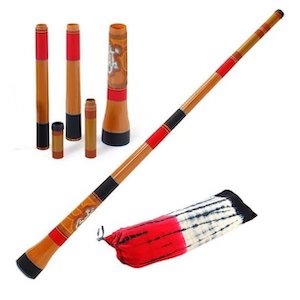
• Price: €79
• More info on Didgeridoo-Passion
Perfect for learning, the Travel-didg is a versatile instrument and works rather well. Its only disadvantage comes from its plastic material, and with all these climate changes, my eco-soul is waking up more and more.
However, it’s a didgeridoo that I often recommend, because for beginners or as a travel didgeridoo, it works very well.
For the little story, I had taken it with me when I went to India in 2013. I had the opportunity with this simple plastic tube to play in front of Amma (Mata Amritanandamayi for intimates). It was for me a beautiful lesson in humility: I was playing in front of one of the greatest current Indian saints with a plastic instrument, very far from the quality of my usual didgeridoos… What a lesson!

“Laughter is the music of the soul.”
• • •
Amma
AirDidge – A carbon didgeridoo that sounds good
• Price: €365
• More info on Didgeridoo-Passion
The Airdidge is a newcomer in the world of travel didgeridoo. Made of carbon and manufactured in Switzerland, it is extremely light, resistant, compact and has several notes… See it as a luxury version of the Travel-Didge. I tested it and I keep a good impression of the instrument.
Well… We are still on a pure cone, which classifies it 100% in the category of conical didgeridoos. If you know me a bit, these are not necessarily my favorite didgeridoo shapes, but there’s something for everyone (also read: Why analyzing the frequencies of your didgeridoo will help you play better).
And in any case, this shape is predominant in the majority of current didgeridoos (the Travel-didge is in the same case) so this “detail” set aside, I recommend the Airdidge if its price fits your budget.
To read feedback from other players, we talk about the Airdidge on this Wakademy forum post.
Other dismountable/retractable didgeridoos
Finally, for the last two models, we switch to another category. Understand by this, that we move on to more sophisticated instruments. However, they will have the disadvantage of being less compact and more expensive than the aforementioned didgeridoos.
Moreover, they don’t quite address the same audience, but I wanted to tell you a few words about them. I specify that I’m only citing two manufacturers, but there are of course many others like Pivert Didgeridoo, or the PhonoDidges (thanks Adrien).
WoodSlides – Travel Range
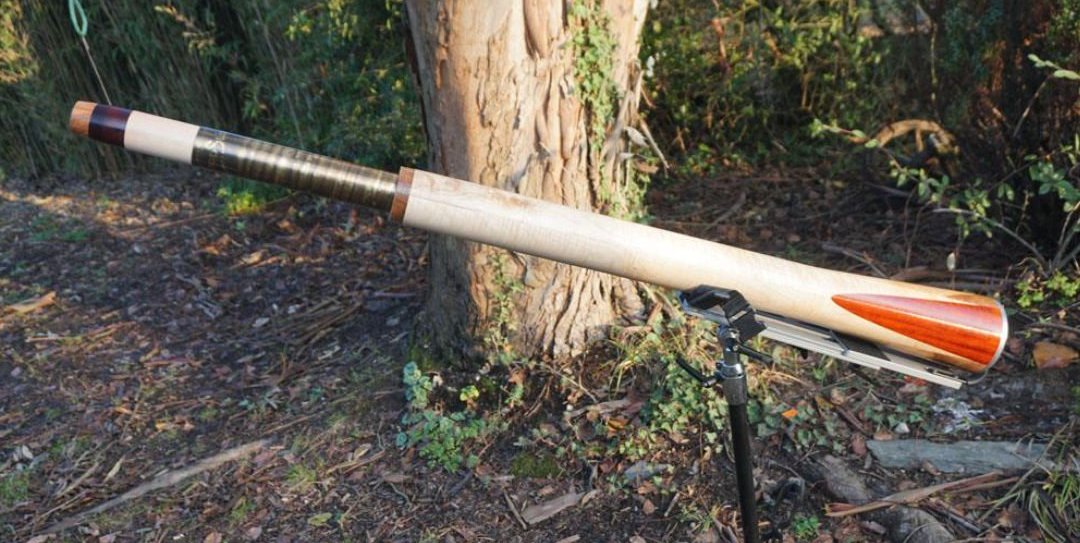
• Price: from €820
• More info on WoodSlide’s website
WoodSlides are slide didgeridoos created by Jean-Yves Redors. There are two ranges: “Classic” and “Travel”. And it’s precisely this latter that interests us. Once folded, the didgeridoo is only one meter long. It is therefore possible to take it with you on the plane. It’s one of the only viable solutions for the plane. The disadvantage lies in its weight, more substantial than an Air Didge for example. But, is it necessary to specify, this type of didgeridoo is primarily intended for players who are looking for a versatile instrument to play with other musicians, while traveling regularly. Amateur enlightened or professional players in short.
In the end, a didgeridoo remains a didgeridoo!
The didgeridoo, like any instrument, is difficult to “retract”. And if it is, it’s at the price of significant compromises (also read: Several notes in a single instrument, a small overview of slide didgeridoos!). Acoustics being master in the world of music, there are minimum proportions, balances to maintain. For my part, I’ve come to terms with having a relatively bulky instrument. That’s how it is. Dogs bark, cats meow, that’s life. And then, when I grumble a bit about my didge, I think of double bass players, pianists or even drummers, then I put things in perspective.
But it’s true that sometimes a travel didgeridoo is useful. So even if it will never have the pretension to replace your “living room” instrument, it can greatly help you out more than once. By the way, if you know other options or if you’ve found your own solutions, give your feedback in the comments. It might help some people!
NB: I specify that I don’t receive any commission on the products mentioned. Wakademy is totally independent and operates solely on the sale of training, workshops and ebooks.

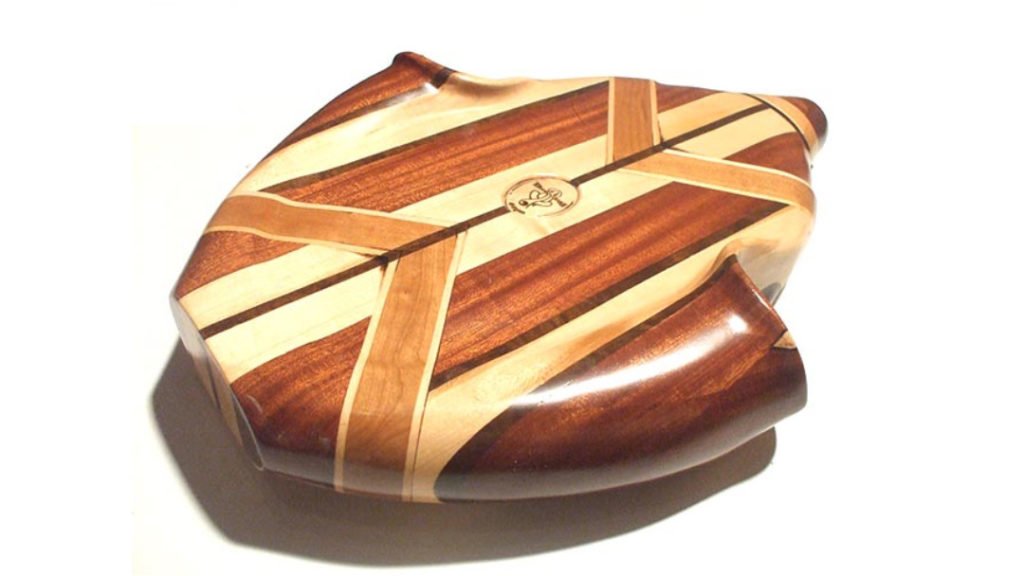
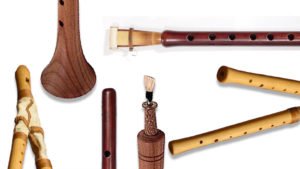












2 Responses
Great article. I have the didj-box. It worked OK, but it is susceptible to cracking if left in your car. I also have the carbon-didge – it is great, but I find it lacks backpressure making it hard to play well. I also have a few 3D printed ones that work well. I don’t consider any of the 5 travel didjs I own suitable for primary instruments, but they are handy and light if you want to pack something along to get in some practice time.
Thanks for your feedback Steve!
Indeed, travel didgeridoos can be a good spare wheel when travelling…